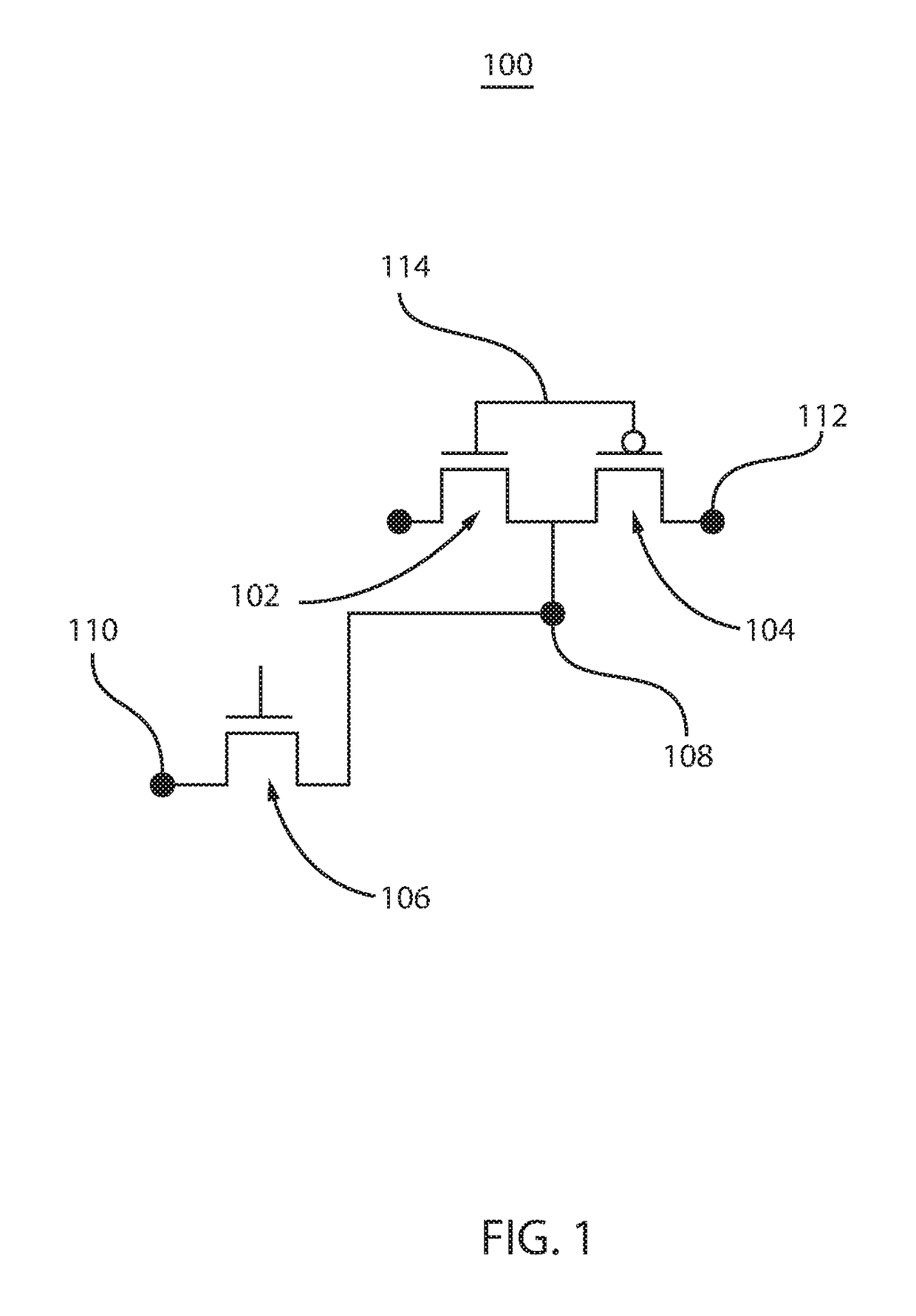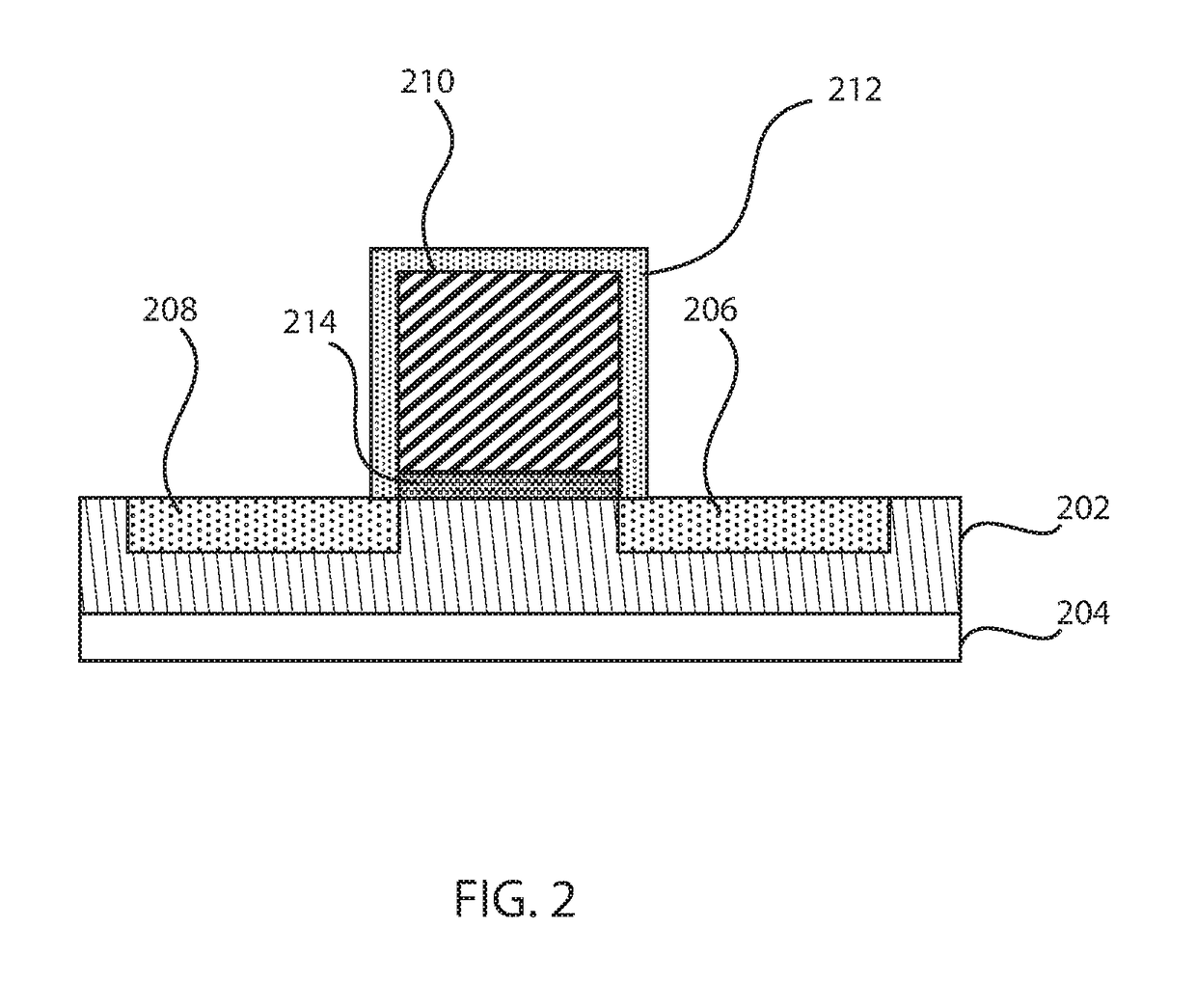High-density EEPROM arrays having parallel-connected common-floating-gate NFET and PFET as memory cell
- Summary
- Abstract
- Description
- Claims
- Application Information
AI Technical Summary
Benefits of technology
Problems solved by technology
Method used
Image
Examples
Embodiment Construction
[0017]In one or more embodiments, a semiconductor structure is provided. The semiconductor structure includes a first transistor connected to a first terminal, a second transistor connected in parallel to the first transistor and a second terminal, where the first and second transistors share a common floating gate and a common node, and an access transistor connected in series to the common node and a low voltage terminal, the access transistor configured to trigger hot-carrier injection to the common floating gate to change a voltage of the common floating gate.
[0018]In one or more embodiments, a memory array is provided. The memory array includes an N×M array of memory cells, each memory cell comprising a first transistor connected to a first terminal, a second transistor connected in parallel to the first transistor and a second terminal, where the first and second transistors share a common floating gate and a common node, and an access transistor connected in series to the com...
PUM
 Login to View More
Login to View More Abstract
Description
Claims
Application Information
 Login to View More
Login to View More - R&D
- Intellectual Property
- Life Sciences
- Materials
- Tech Scout
- Unparalleled Data Quality
- Higher Quality Content
- 60% Fewer Hallucinations
Browse by: Latest US Patents, China's latest patents, Technical Efficacy Thesaurus, Application Domain, Technology Topic, Popular Technical Reports.
© 2025 PatSnap. All rights reserved.Legal|Privacy policy|Modern Slavery Act Transparency Statement|Sitemap|About US| Contact US: help@patsnap.com



